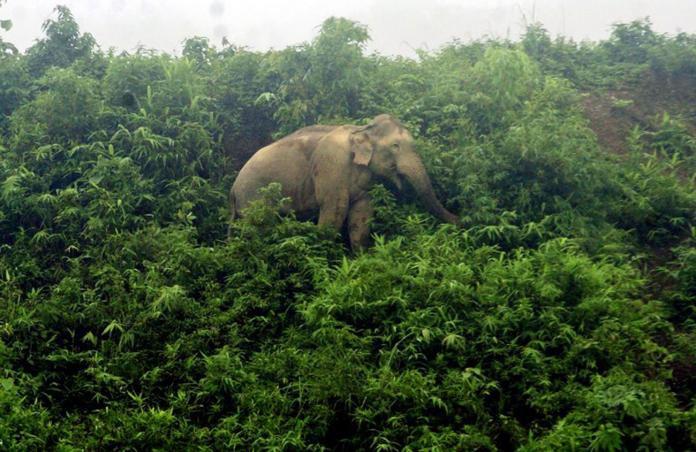Elephant Poaching, killings: Swept under the rug

Dhaka, 24 August, 2020: To avoid animosity with locals responsible for the deaths of wild elephants in the Chattogram region, forest department officials manipulate autopsy reports by attributing the deaths to natural causes and rarely file cases, thus sparing the killers of a critically endangered species.
On June 28, a baby elephant was found dead within the periphery of a tea garden in Boilchari union of Banshkhali upazila this year.
The tea garden authorities most likely installed the barbed wire fence to stop elephants entering the garden, according to villagers.
Though accounts of eyewitnesses and forest officers indicate that the elephant died of electrocution — given the presence of metal wire and an electric pole nearby — the autopsy report was inconclusive as to the cause of death.
Three elephants died in the last two months at the Kalipur range office of Banshkhali upazila, which falls under the jurisdiction of Chattogram Divisional Forest Office (South).
They were all Asian elephants, which are classified as "critically endangered" in Bangladesh.
When a livestock official tries to portray the true cause of death in the autopsy, they come under pressure from forest department higher-ups, a livestock official who performs autopsies at the forest office, preferring anonymity, told The Daily Star.
In another autopsy of an elephant that died at Fasiakhali of Lama upazila in Bandarban, it was shown to be a natural death, though an electric metal wire was found close to the spot, according to eyewitnesses.
Since 2001, the Chattogram divisional forest office (South) has seen 19 elephant deaths — the highest toll in the Chattogram Forest Circle — among which six were electrocuted.
However, this divisional forest office was only able to file one case so far.
According to forest department data, 106 elephants died in the Chattogram Forest Circle — which includes Cox's Bazar, parts of Bandarban, Chattogram city, and Rangamati — in the last 19 years.
During this period, forest departments across this region filed only two cases and 74 general diaries in relation to elephant deaths.
Of these 106 elephants — 32 died in accidents, 29 of sickness, 22 from old age complications, 15 of electrocution, and eight from gunshots.
Banshkhali upazila alone saw the deaths of three elephants in two months this summer.
Locals in Sadhanpur village alleged that forest officials don't rush to the spot when they are informed of elephant deaths.
In these three incidents, these officials only went to the spot when the carcass was already decomposing, Anwar Hossein, a resident of the village in Banshkhali upazila, told The Daily Star.
Kamal Hossen, professor of the Institute of Forestry and Environmental Science at Chattogram University, told The Daily Star the forest department tries to avoid hassle by not going after the elephant killers.
The data proves it, he said, with the low number of cases filed in relation to these killings — indicating that the forest department doesn't want the hassle.
"Until elephant killers are brought under the purview of law and given exemplary punishment, this crime against wildlife will not decrease and there will be no awareness on the matter," he added.
Mozammel Hoque Shah Chowdhury, divisional forest officer of Chattogram (South), did not respond to several calls and a text from this correspondent.
Contacted, Abu Naser Md Neyaz Yeasin, divisional forest officer (wildlife and nature conservation), told The Daily Star that wildlife law is defective in many aspects — the scope the law permits can't be fully utilised due to the negligence of forest officials.
"In brief, that's the reason behind the low number of cases against elephant killings in the country," he said.
As per the law, the concerned forest officials can file a case if any wildlife is killed within their jurisdiction in consultation with the warden of the wildlife divisional forest office.
Mihir Kumar Dey, conservator of forest for the wildlife and nature conservation circle of the forest department, claimed that in every incident where an elephant was killed, they filed cases.
When asked how many cases had been filed so far, he was unable to give an exact number.
Abu Naser added that actual natural deaths of wild elephants are also worrying for forest and wildlife conservation officials.
Elephants falling down hills, those killed in fights with other elephants, and those dying of sickness count as natural deaths.
"The number of natural deaths is also a great concern for us as the toll from natural death tops the list. It could be attributed to genetic change due to the loss of corridors and habitat. In fact, we need significant research to determine the root causes of this crisis," he said.
Read More
.

